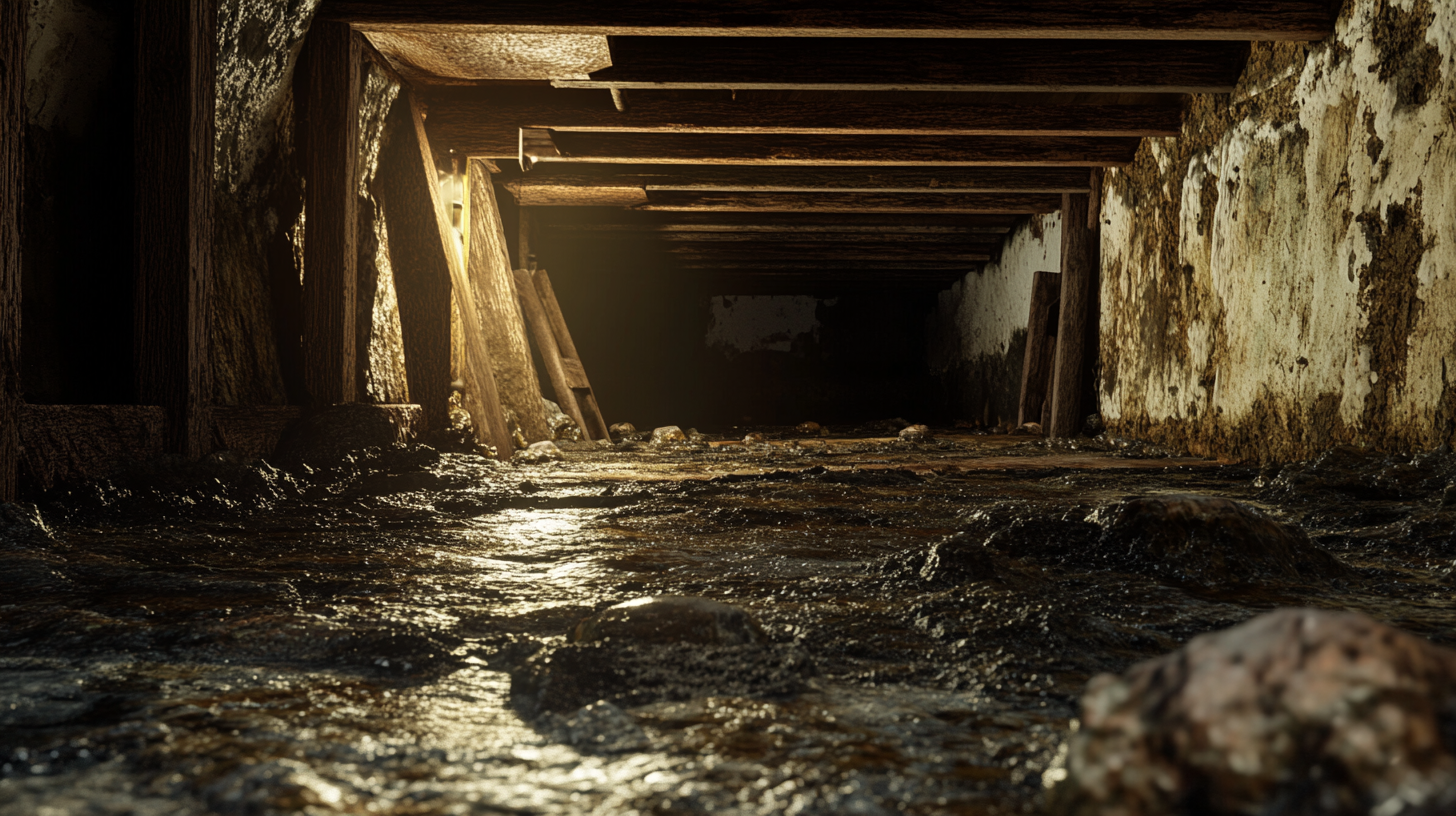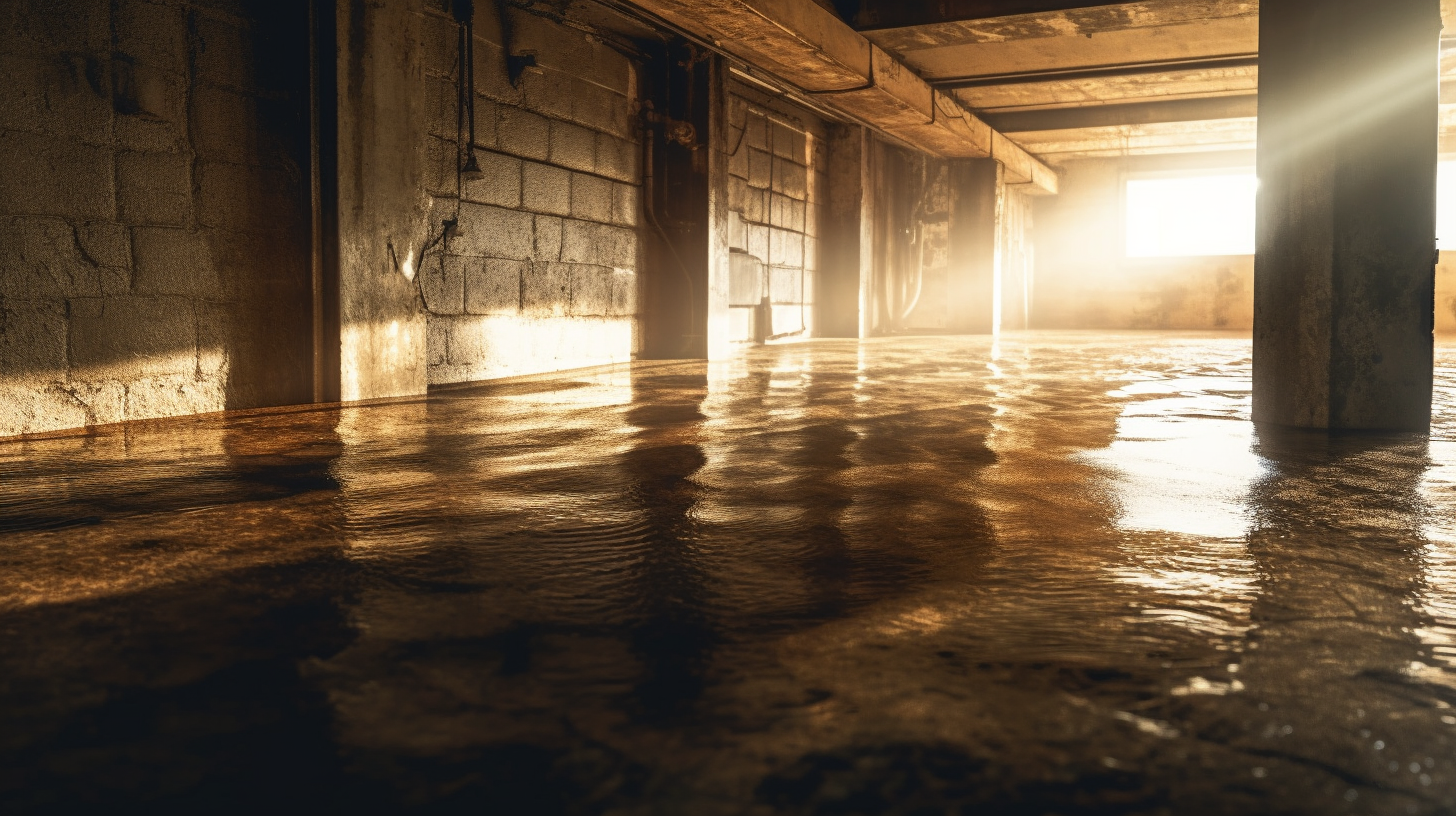Now IS THe Time To...

Crawl Space Services In Knoxville, TN
Stetson Howard: 865-432-6743
CRAWL SPACE ENCAPSULATION, REPAIR, WATERPROOFING & MOLD REMOVAL
No-Obligation, Free Inspections
No-Obligation Free Estimates
We Warranty All of Our Work
100% Satisfaction Guaranteed
Waterproofing is a fundamental element in roof construction, playing a critical role in protecting a building’s structural integrity. Without proper waterproofing, roofs become vulnerable to water damage, which can lead to leaks, mold growth, and extensive interior damage over time. Moisture infiltration not only weakens roofing materials but can also compromise insulation, leading to increased energy costs and the degradation of essential structural components like beams and ceilings.
Waterproofing is especially important in regions with frequent rainfall, snow, or extreme weather conditions. By providing a barrier against water penetration, a properly waterproofed roof shields a building from the harmful effects of weathering. This protection extends the roof’s lifespan and ensures that it can withstand long-term exposure to moisture, UV radiation, and fluctuating temperatures.
Furthermore, waterproofing materials are designed to prevent the onset of leaks, which can often remain undetected until significant damage has occurred. By investing in high-quality waterproofing during the initial construction phase or through timely roof maintenance, property owners can prevent costly repairs and prolong the longevity of their building.
In essence, waterproofing is not just a protective measure but a vital investment in the overall durability, safety, and efficiency of any structure.
Why Roof Waterproofing is Essential
Protecting Against Water Damage
Water infiltration is one of the most common and damaging problems that roofs can face. When water seeps into a building's roof, it can cause significant structural damage, leading to weakened support beams, wood rot, and even collapse in severe cases. Additionally, persistent moisture can foster the growth of mold and mildew, which not only compromises the integrity of the roof but also poses serious health risks to occupants. By implementing effective waterproofing solutions, homeowners and builders can prevent leaks that might otherwise jeopardize the entire structure. Waterproofing acts as a shield, keeping water out and ensuring that the roof—and the building as a whole—remains safe and sound over time.
Prolonging Roof Lifespan
A well-waterproofed roof is built to withstand the test of time and the elements. Harsh weather conditions like heavy rain, snow, and strong winds can take a toll on a roof, causing wear and tear that leads to frequent repairs or even premature replacement. By investing in high-quality waterproofing materials and techniques, the roof's resistance to these environmental challenges is greatly enhanced. Regular maintenance and reapplication of waterproofing materials help to ensure that the roof remains durable, minimizing the need for costly and frequent repairs. In essence, proper waterproofing is not just a protective measure—it’s an investment in the longevity of the roof, ensuring it can endure the elements and provide reliable shelter for many years.
Improving Energy Efficiency
Beyond protecting against water damage and extending the lifespan of a roof, waterproofing can also play a critical role in improving a building's energy efficiency. Modern waterproofing materials, such as reflective coatings, are designed to enhance the roof’s insulation properties by reflecting sunlight and reducing heat absorption. This helps to keep the interior of the building cooler during hot weather, thereby reducing the reliance on air conditioning and lowering energy bills. Moreover, a dry and well-maintained roof prevents moisture from penetrating the insulation layer, which can otherwise degrade its performance and lead to increased energy consumption. By maintaining a dry roof through effective waterproofing, building owners can ensure better indoor air quality, improved insulation performance, and overall greater energy efficiency.
Key Waterproofing Solutions for Roofs
Liquid Waterproofing Membranes
Liquid-applied waterproofing membranes are a versatile and effective solution for protecting roofs. When applied, these membranes form a seamless and flexible barrier that adheres to the surface, eliminating the risk of leaks that often occur at joints or seams in other materials. This makes them ideal for both flat and sloped roofs. Their flexibility allows them to adapt to the natural movement of the roof caused by temperature fluctuations, ensuring long-lasting protection.
Advantages:
- Suitable for flat and sloped roofs, offering a versatile solution for different roof types.
- Provides a seamless, joint-free finish, reducing the risk of water infiltration.
- Flexible enough to accommodate the expansion and contraction of the roof due to changing temperatures.
Materials Used:
- Polyurethane-based liquid membranes: Known for their high durability, these membranes provide strong protection against weathering and wear.
- Acrylic liquid membranes: Environmentally friendly and resistant to UV radiation, making them a sustainable choice for long-term roof protection.
Bituminous (Asphalt) Membranes
Bituminous membranes, often referred to as asphalt-based membranes, are one of the most reliable options for waterproofing flat and low-sloped roofs. They offer excellent protection against heavy rainfall and extreme weather conditions, making them a popular choice in regions prone to such elements. Bituminous membranes are highly durable and resistant to mechanical damage, ensuring a long service life for the roof.
Advantages:
- Exceptional waterproofing capabilities, particularly for roofs in areas with heavy rainfall.
- Highly durable, providing resistance against mechanical damage and foot traffic.
- Suitable for regions with extreme weather, offering robust protection against environmental stress.
Materials Used:
- Self-adhesive bitumen sheets: These are easy to install, making them a practical solution for homeowners and contractors alike.
- Modified bitumen membranes: Enhanced with polymers, these membranes offer greater flexibility and longevity, even under harsh conditions.
EPDM Rubber Membranes
Ethylene Propylene Diene Monomer (EPDM) is a synthetic rubber material highly regarded for its elasticity and long-lasting performance. EPDM membranes are particularly well-suited for roofs that undergo frequent expansion and contraction due to temperature changes. Additionally, their excellent resistance to UV radiation and ozone makes them a durable option for both flat and low-sloped roofs.
Advantages:
- Superior flexibility, making them ideal for roofs that expand and contract with temperature fluctuations.
- Outstanding resistance to UV radiation and ozone, ensuring a longer lifespan for the roof.
- Effective for both flat and low-slope roofs, providing a versatile solution for different roof designs.
Materials Used:
- Single-ply EPDM sheets: Available in large rolls, these sheets allow for seamless installation, minimizing the risk of leaks.
- Adhesive or mechanical fastening options: These provide easy installation and a secure fit, ensuring long-term waterproofing.
Best Material Choices for Specific Roof Types
Flat Roofs
Flat roofs require waterproofing materials that can effectively handle standing water and extreme weather conditions. These roofs are common in commercial buildings but are also used in residential construction. Selecting the right material ensures durability and long-term protection against water infiltration.
Recommended Materials:
- TPO (Thermoplastic Polyolefin): TPO is a single-ply membrane that offers excellent UV resistance and energy efficiency. It reflects heat, reducing cooling costs, making it a popular choice for both residential and commercial buildings with flat roofs.
- PVC (Polyvinyl Chloride): Known for its durability and heat-reflective properties, PVC membranes are ideal for commercial flat roofs. They are highly resistant to fire, chemicals, and punctures, providing a long-lasting waterproofing solution.
- Bitumen Membranes: Bitumen membranes, especially those modified with polymers, are highly effective for waterproofing flat roofs, particularly in regions with heavy rainfall. Their durability and flexibility ensure robust protection against water damage over time.
Sloped Roofs
Sloped roofs pose different challenges for waterproofing, with the need for materials that can adapt to the roof's angles while providing comprehensive protection against leaks and water penetration. The following materials are best suited for sloped roofs, ensuring both water resistance and durability.
Recommended Materials:
- Liquid Waterproofing Membranes: Liquid-applied waterproofing membranes are ideal for sloped roofs because they conform seamlessly to the roof’s contours, providing a smooth, joint-free layer that protects against water infiltration.
- Asphalt Shingles with Waterproof Underlayment: A popular choice for residential homes, asphalt shingles offer durability and water resistance. Pairing them with a waterproof underlayment adds an extra layer of protection, especially in areas prone to heavy rain or snow.
- Metal Roofing with Waterproof Coatings: Metal roofs are known for their longevity and strength. When paired with specialized waterproof coatings, they provide exceptional protection against weathering, making them an excellent choice for sloped roofs in areas with extreme weather conditions.
Green Roofs
Green roofs, which integrate vegetation and soil into the roofing system, require specialized waterproofing to handle the added weight and prevent water leakage and root intrusion. The materials used in green roofing must be durable and resistant to root penetration, ensuring long-term performance.
Recommended Materials:
- EPDM Rubber Membranes: EPDM membranes are highly flexible and durable, making them suitable for green roofs. Their ability to handle the weight of soil and vegetation, combined with excellent resistance to UV radiation, ensures long-lasting waterproofing for green roofing systems.
- Root-Resistant Waterproofing Membranes: These specialized membranes are designed to prevent plant roots from penetrating the waterproofing layer, which could otherwise compromise the roof’s integrity. They are essential for maintaining the durability of green roofs.
- PVC Membranes: PVC membranes are highly water-resistant and provide excellent root repellence, making them a solid choice for green roofs. Their durability and ability to withstand moisture and plant growth make them ideal for sustaining green roof systems over time.
Factors to Consider When Choosing Roof Waterproofing Materials
Climate and Weather Conditions
When selecting roof waterproofing materials, the local climate plays a critical role in determining the right option. For regions that experience high levels of sunlight, UV-resistant materials like TPO or reflective coatings can help prevent degradation caused by constant sun exposure. In contrast, areas prone to heavy rainfall or snow require highly waterproof membranes, such as bitumen or EPDM, which can provide robust protection against water infiltration.
Additionally, temperature fluctuations should be considered. Materials that can expand and contract without cracking, such as liquid-applied membranes or rubber-based systems like EPDM, are ideal for climates with extreme temperature shifts. These flexible materials ensure long-term durability, even in challenging weather conditions.
Roof Slope and Structure
The slope of your roof significantly impacts the type of waterproofing material you should choose. Flat roofs are more susceptible to water ponding, so it is essential to select materials that can effectively prevent standing water. Options like liquid waterproofing membranes or bitumen membranes are excellent choices, as they form a seamless, waterproof barrier that ensures water does not accumulate and cause damage.
For sloped roofs, lighter materials such as asphalt shingles or liquid-applied membranes are often more suitable. These materials are easier to install on sloped surfaces and provide thorough coverage, adapting well to the roof’s angles and contours.
Longevity and Maintenance
The lifespan and maintenance requirements of waterproofing materials vary, and these factors should be taken into account when making your selection. Some materials, such as EPDM rubber membranes, are highly durable and require minimal maintenance, making them a cost-effective solution over time. Other materials, like bitumen membranes, may need regular inspections and upkeep to ensure continued protection.
It’s also important to choose materials with long warranties, which provide peace of mind and ensure the roof’s protection for years to come. High-quality materials like PVC or EPDM often come with extended warranties, reflecting their durability and reduced need for frequent repairs.
Cost and Budget
Budget is a key consideration when selecting roof waterproofing materials. While some options, such as EPDM or PVC membranes, may have a higher upfront installation cost, they offer significant long-term benefits, including extended lifespans and reduced maintenance costs. These materials often provide better overall value, as their durability means fewer repairs or replacements over time.
On the other hand, less expensive options like bitumen membranes or asphalt shingles may have a lower initial cost but could require more frequent maintenance or replacement, potentially leading to higher long-term expenses. Balancing the initial cost with the expected maintenance and longevity of the material is crucial in making an informed, cost-effective decision.
Long-Term Maintenance of Roof Waterproofing
Regular Inspections
Maintaining the integrity of your roof’s waterproofing system requires regular inspections. Scheduling annual inspections is essential to catch any early signs of damage or wear that may compromise the waterproofing layer. During these inspections, check for visible issues such as cracks, blisters, or pooling water, which are often indicators of leaks or membrane degradation. Addressing these problems promptly ensures that small, manageable repairs can be made before they escalate into more significant and costly damage.
Cleaning and Debris Removal
A clean roof is essential for maintaining the effectiveness of waterproofing materials. Debris, such as leaves, branches, and dirt, can accumulate on the roof and trap moisture, which may damage the waterproofing membrane over time. Regularly remove any debris to ensure water flows off the roof properly and doesn't build up in areas that could lead to leaks. Additionally, keeping gutters and downspouts clear is crucial for preventing water buildup, which can strain the waterproofing system and cause damage to the roof structure.
Repair and Recoating
Even with high-quality waterproofing materials, minor wear and tear can occur over time. It is important to address small repairs as soon as they are identified to prevent minor issues from developing into significant leaks. For roofs with liquid-applied waterproofing membranes, recoating may be necessary every few years to maintain optimal performance. Recoating reinforces the waterproof barrier, ensuring that the roof remains protected from the elements and prolonging its lifespan. By staying proactive with repairs and recoating, you can maximize the durability and effectiveness of your roof’s waterproofing system.
FAQs
Recent Blog Posts
Crawl Space News







